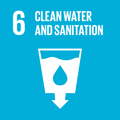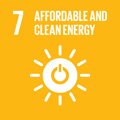- Docente: Paolo Garofalo
- Credits: 8
- SSD: GEO/05
- Language: English
- Teaching Mode: In-person learning (entirely or partially)
- Campus: Bologna
- Corso: Second cycle degree programme (LM) in Geology and Territory (cod. 9073)
Learning outcomes
This course aims at providing an integrated and quantitative understanding of the geochemical processes leading to the genesis of mineral deposits, their environmental impact, and the analytical questions linking them. The first module will focus on analysis of rocks and minerals. The second module will focus on analysis of fluids and gases.
Course contents
The objective of this course is giving the students an introduction to the geochemical processes, techniques, and methods that are necessary to quantify and model the genesis of primary mineral deposits (typical ore bodies), recover secondary raw materials, quantify rock-fluid-gas interactions in geological environments, and also evaluate environmental risks and rehabilitation good practices associated to RM exploitation. The course contents will include electrolyte theory; concept and use of equilibrium constants in geochemistry; chemical potential diagrams; metal partitioning, solubility, and transport in natural aqueous solutions; solubility of ore and gangue minerals; saturation index and its applications; mineral stability diagrams; Eh-pH diagrams; stable isotope systematics; environmental impact and consequent rehabilitation of natural and man-made pollution.
At the end of the course the students will gain the fundamental geochemical tools to RM exploration, and evaluation of environmental impact. A number of seminars from industry and institutional partners will provide hands-on knowledge and case studies of applications of geochemical tools.
Readings/Bibliography
Anderson G. (2017). Thermodynamics of Natural Systems. Cambridge University Press, 3rd Edition
Barnes H.L. (1997). Geochemistry of Hydrothermal Ore Deposits: Wiley & Sons, Inc.. 3rd Edition
Treatise in Geochemistry (2003). Environmental Geochemistry. Vol. 9. p. 1-203. Elsevier
Papers and additional reading material will be distributed as well
Teaching methods
Class teaching;
Laboratory excercises;
Seminars
Assessment methods
1. Level of independence and effectiveness during classroom exercises – 25%
2. Written test – 50%
3. Oral test – 25%
Teaching tools
Laboratory excercises;
Office hours
See the website of Paolo Garofalo
SDGs




This teaching activity contributes to the achievement of the Sustainable Development Goals of the UN 2030 Agenda.
